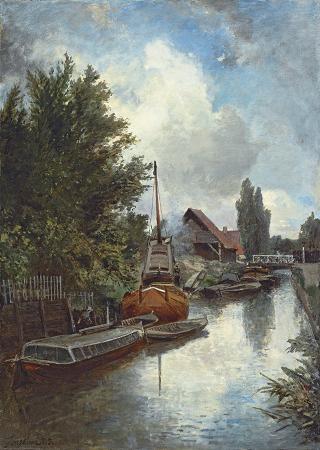Delft. Delft is a city and municipality in the province of South Holland, Netherlands. It is located between Rotterdam, to the southeast, and The Hague, to the northwest. Together with them, it is part of both Rotterdam-The Hague metropolitan area and the Randstad. Delft is a popular tourist destination in the country of The Netherlands. It is home to Delft University of Technology, regarded as center of technological research and development in the Netherlands, Delft Blue pottery and the currently reigning House of Orange-Nassau. Historically, Delft played a highly influential role in the Dutch Golden Age. Delft has a special place in the history of microbiology. In terms of science and technology, thanks to the pioneering contributions of Antonie van Leeuwenhoek and Martinus Beijerinck, Delft can be considered to be the true birthplace of microbiology, with its several sub-disciplines such as bacteriology, protozoology, and virology. The city of Delft came into being beside a canal, the 'Delf', which comes from the word delven, meaning to delve or dig, and this led to the name Delft. At the elevated place where this 'Delf' crossed the creek wall of the silted up river Gantel, a Count established his manor, probably around 1075. Partly because of this, Delft became an important market town, the evidence for which can be seen in the size of its central market square. From a rural village in the early Middle Ages, Delft developed into a city, that in the 13th century received its charter. The town's association with the House of Orange started when William of Orange, nicknamed William the Silent, took up residence in 1572. At the time he was the leader of growing national Dutch resistance against Spanish occupation, known as the Eighty Years' War. By then Delft was one of the leading cities of Holland and it was equipped with the necessary city walls to serve as a headquarters. An attack by Spanish forces in October of that year was repelled. After the Act of Abjuration was proclaimed in 1581, Delft became the de facto capital of the newly independent Netherlands, as the seat of the Prince of Orange. When William was shot dead in 1584 by Balthazar Gerards in the hall of the Prinsenhof, the family's traditional burial place in Breda was still in the hands of the Spanish. Therefore, he was buried in the Delft Nieuwe Kerk, starting a tradition for the House of Orange that has continued to the present day. The Delft Explosion, also known in history as the Delft Thunderclap, occurred on 12 October 1654 when a gunpowder store exploded, destroying much of the city. Over a hundred people were killed and thousands were wounded. About 30 tonnes of gunpowder were stored in barrels in a magazine in a former Clarist convent in the Doelenkwartier district. Cornelis Soetens, the keeper of the magazine, opened the store to check a sample of the powder and a huge explosion followed. Luckily, many citizens were away, visiting a market in Schiedam or a fair in The Hague. Today, the explosion is primarily remembered for killing Rembrandt's most promising pupil, Carel Fabritius, and destroying almost all of his works. Delft artist Egbert van der Poel painted several pictures of Delft showing the devastation. The gunpowder store was subsequently re-housed, a 'cannonball's distance away', outside the city, in a new building designed by architect Pieter Post. The city centre retains a large number of monumental buildings, while in many streets there are canals of which the banks are connected by typical bridges, altogether making this city a notable tourist destination.
more...












